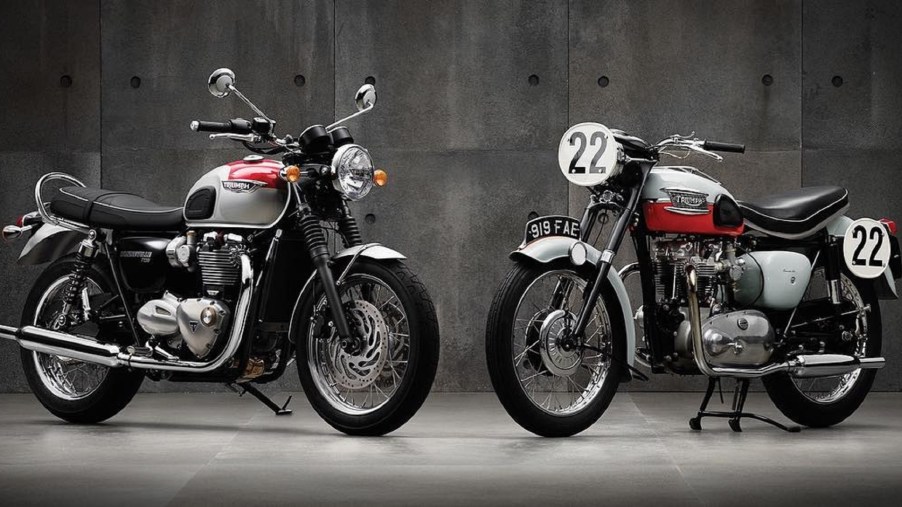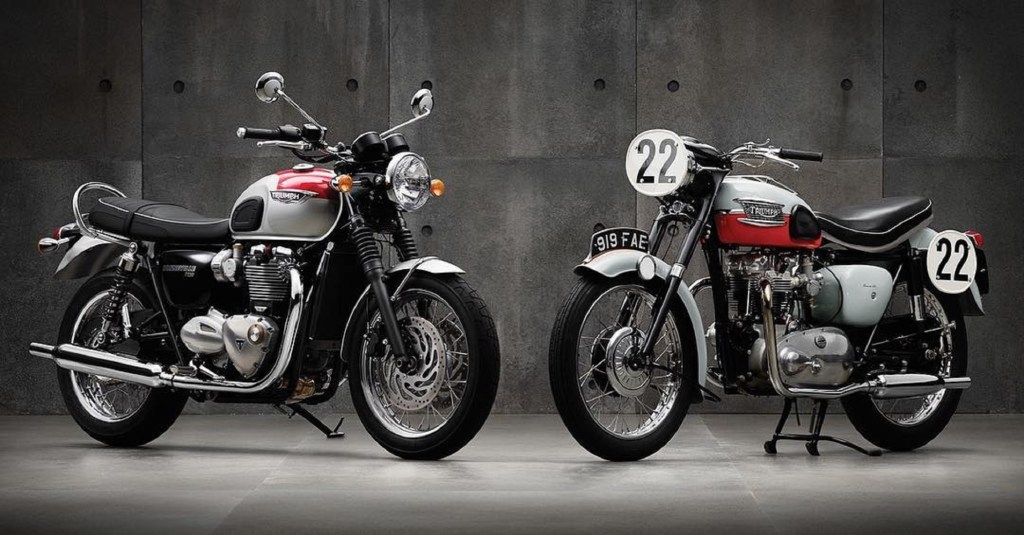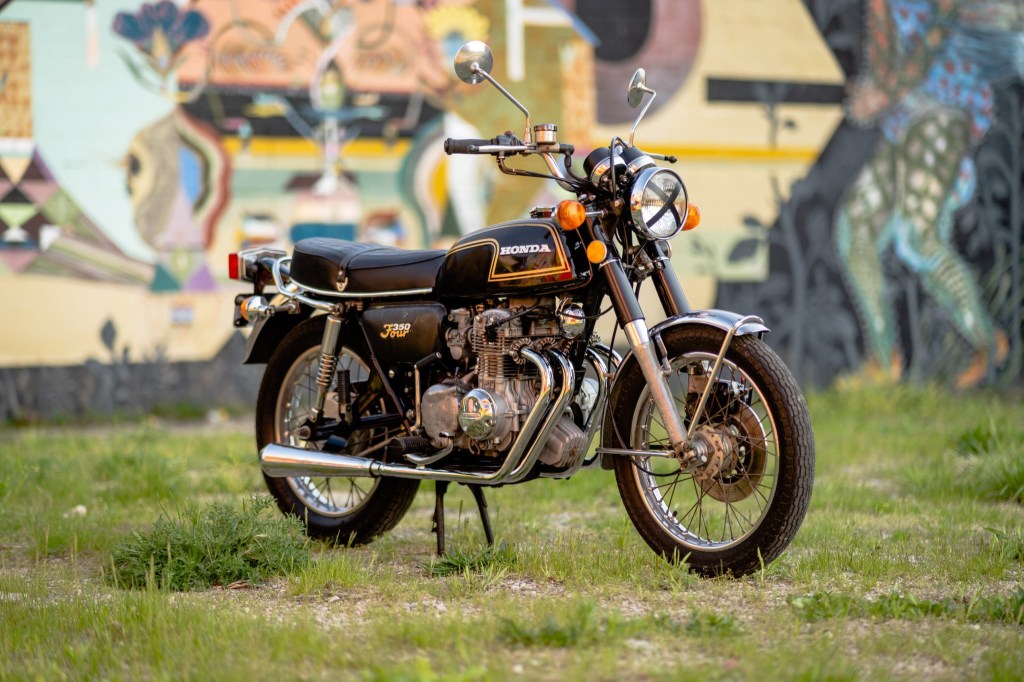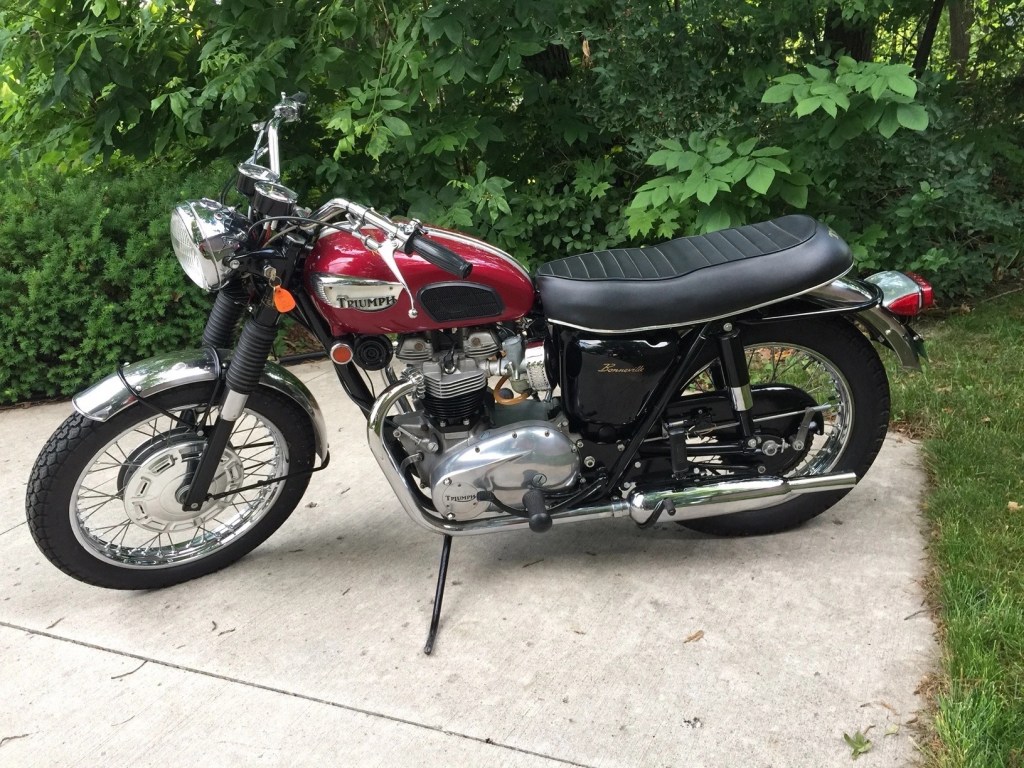
A Classic Triumph Bonneville Doesn’t Have Modern Reliability
While there’s no shortage of vintage-style bikes on sale today, arguably the segment’s best example is the Triumph Bonneville. Although the Ducati Sport 1000 sort of got there first, the Bonneville, Thruxton café racer, and Scrambler have together inspired a whole host of neo-classic motorcycles. Some, though, maybe inspired to get their hands on a classic Triumph Bonneville for the authentic experience. But from a reliability perspective, that’s not necessarily the best idea.
Triumph Bonneville: New vs. classic

Although it’s British, the Triumph Bonneville has America to thank for its existence, Cycle World reports. American customers wanted more power than the company’s 650cc two-cylinder Tiger T110 could produce, RideApart explains. So, in 1959, Triumph gave it another carburetor, turning it into the 1959 Bonneville T120, Motorcyclist reports.
The original Triumph Bonneville was produced from 1959-1983 in the British bikemaker’s Meridian factory, hence why the classic models are called ‘Meridian Bonnevilles,’ Hemmings reports. But the 1963-1970 models are perhaps the most beloved. The 650cc air-cooled two-cylinder motor and the 4-speed transmission were redesigned, as was the bike’s frame.
The later 70s Triumph Bonneville T140s, though, received front disc brakes, The Drive reports. By the end of production, the Bonneville had full discs and an electric starter.
After a multi-decade hiatus, Triumph brought the Bonneville back in 2001, Motorcyclist reports. And in 2016, it was updated into its current T120 and T100 forms, which offer considerably more tech.

In 1970, the Bonneville’s 650cc two-cylinder made 49 hp, Classic-British-Motorcycles.com reports. The 2020 Triumph Bonneville T120 has a 1200cc fuel-injected water-cooled two-cylinder, rated at 80 hp and 77 lb-ft, linked to a 6-speed transmission. The modern bike also comes with front and rear ABS-equipped disc brakes, traction control, cruise control, and multiple riding modes. And in addition to an analog speedometer and tachometer, it has an LCD, a fuel gauge, a gear indicator, and heated grips. The classic bike, though, is over 100 pounds lighter.
Riding the bikes
Despite its age, a classic Triumph Bonneville is still fun to ride on modern roads. With a curb weight in-between a Honda Rebel 300 and 500, it’s not intimidating. And though its drum brakes aren’t quite as effective as disks, the bike stops relatively well. Plus, the transmission is easy to shift.
However, the newest Triumph Bonneville T120 is almost fault-less, Cycle World reports. True, it’s heavier than the classic model, and the large engine can intimidate newer riders. But the clutch is easy to modulate, as are the brakes and throttle. And the handling is excellent.
If the engine size worries you, the 900cc, 5-speed Bonneville T100 has all the T120’s strengths in a more-approachable package, RideApart reports. Admittedly, it lacks the standard heated grips, riding modes, and cruise control. But with ‘only’ 55 hp and 59 lb-ft, it’s numerically less intimidating. And it’s still an excellent all-around bike, Cycle World reports.
But besides features and power, there is one more area where the modern Triumph Bonneville out-classes the classic one: reliability.
Triumph Bonneville: common problems
Admittedly, classic motorcycles are rarely as reliable as modern bikes. That applies even to bikes like the Honda CB350F and the BMW /6 models. As vehicles age, their cables fray and snap, and their rubber components crack and leak. Plus, many motorcycles of the period had shorter maintenance schedules than modern ones do.
And it’s not like the modern Triumph Bonneville is immune from quality issues. Some owners have suffered water in the gauges and lights, as well as squealing brakes. In 2019, several Bonneville models were recalled due to wiring harness problems, RideApart reports. And pre-2019 models, TriumphRat forum members report, occasionally had problems shifting due to a spring failing in the shifter mechanism. However, most of these problems appeared after the bikes were dropped. And the problematic part has since been replaced with an updated one.
In contrast, as Cycle World’s Peter Egan described in his 1988 column “Alas, Albion,” classic Bonnevilles typically leaked gas and fluids even when they weren’t broken. This was exacerbated in the post-1971 models, Classic-British-Motorcycles.com reports, which stored their engine oil in their frames. Decades later, Buell would introduce a similar concept with its bikes. However, while Buell’s bikes worked, the 70s Bonnevilles didn’t. The oil kept foaming, and the attempted redesign decreased the oil supply.

But even the earlier models weren’t perfect, Motorcyclist reports. Their Lucas electrics are particularly notorious for unreliability. And to make matters worse, unlike Japanese bikes of the day, most British motorcycles were shipped unassembled, adding further quality-control issues. Few of which were ever covered under warranty, Cycle World reports.
Pricing comparison and buying advice

A classic Triumph Bonneville is in some ways easier to repair than a modern one. It has few if any electrics. The brakes are mechanical, not hydraulic, and there’s no radiator or complicated fuel pumping system. But you’ll always be “’ tinkering’ around with it,” ClassicBritishSpares reports. If you want a bike that you can just get on and ride, the modern Bonneville is the better choice.
Plus, nowadays classic Triumph Bonnevilles aren’t necessarily significantly cheaper than new ones. A 2020 Bonneville T120 starts at $11,850; the T100 starts at $10,450. And while some 1970-and-earlier bikes sell for about $8000, Bring a Trailer reports, others sell for $10,000-$15,000.
Follow more updates from MotorBiscuit on our Facebook page.


